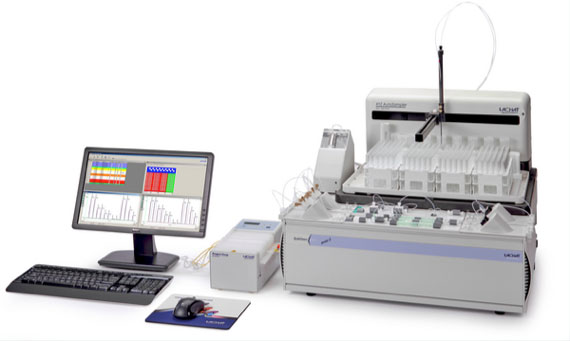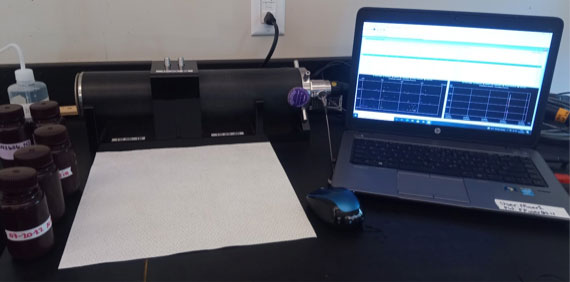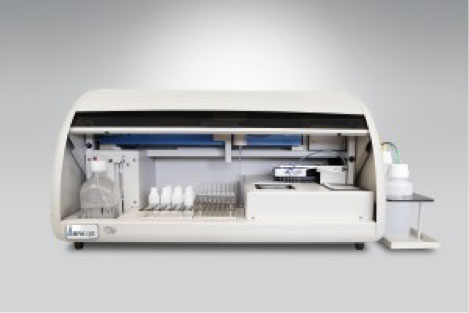History
- Initial certification: 10/4/21
- Current certification period: 4/1/22 – 3/31/23
Environmental Laboratory Accreditation Program Proficiency Tests successfully completed
- December 2020, August 2021 , December 2021
Nutrients (by Lachat)
| Analyte | Method | Certified? | Limit of Detection (LOD), Range |
|
Orthophosphate (as P) |
EPA method 365.1 rev 2 (1993) |
x |
LOD: 1 µg P/L |
|
Phosphorus, Total |
EPA method 365.1 rev 2 (1993) |
x |
LOD: 1 µg P/L |
|
Nitrate (as N) |
EPA method 353.2 rev 2 (1993) |
x |
LOD: 4 µg N/L |
|
Ammonia (as N) |
EPA method 350.1 rev 2 (1993) |
x |
LOD: 10 µg N/L as NH3 |
|
Nitrogen, Total |
Lachat Method 10-107-04-4-B |
|
Range: 20 to 2,000 µg N/L |
Chlorophyll by bbe FluoroProbe
|
Analyte |
Method |
Certified? |
Limit of Detection (LOD), |
|
Chlorophyll-a |
Finger Lakes Institute FluoroProbe SOP |
|
LOD: 0.00 – 500 µg Chl-a/L (specified by manufacturer) |
Microcystin by Abraxis
|
Analyte |
Method |
Certified? |
Limit of Detection (LOD), |
|
Total Microcystins |
EPA Method 546 |
x |
LOD: 0.3 µg/L |
Overview of Instrumentation
 Lachat: Quikchem 8500 Series 2 Flow Injection Analysis System
Lachat: Quikchem 8500 Series 2 Flow Injection Analysis System
(photo credit: hach.com)
- High sample throughput
- Modular manifold system for analytes
- Automated chemistry mixing, autosampler, Omnion software for data quality management
 bbe FluoroProbe: Chlorophyll-a by Algal Class
bbe FluoroProbe: Chlorophyll-a by Algal Class
- Workstation mode for laboratory analysis of Chlorophyll-a
- Breakdown of Chlorophyll-a into different phytoplankton groups
- Turbidity and yellow substances correction
 Abraxis CAAS Automated ELISA System: Total Microcystins
Abraxis CAAS Automated ELISA System: Total Microcystins
(photo credit: Abraxis)
- Fully automated 96-well microplate analysis system for the quantitation of cyanotoxins
- Computer-controlled with automating fluid handling, plate mixing, incubation timing, optical reading, calculations and report generation
Illustrative Lab Experience
-
- Nutrients:
- Honeoye – comparative data set over last 4 years (2018-2021)
- FLI, CSLAP, commercial certified lab comparisons
- Contact: Terry Gronwall, Honeoye Lake
- Lab analysis for Great Lakes Research Consortium study, Adapting emerging phosphorous removal technologies for use in Great Lakes agricultural settings
- Contact: Ian Smith, Seneca Watershed Steward
- Chlorophyll-a:
- FLI screens Harmful Algal Bloom samples for Keuka Lake Association, Canandaigua Lake Watershed Association, Canandaigua Lake Watershed Council, Seneca Lake Pure Waters, 2018-2022
- FLI Standard Operating Procedure approved as part of a New York State reviewed project and report, Owasco Lake HAB Inhibiting Technologies Assessment, 2018-2019
- Microcystin:
- Research projects in collaboration with Cornell U. and funded through the New York State Water Resources Institute (US Geological Survey reviews proposals)
- Mobile toolkit for rapid in-field screening of freshwater Harmful Algal Blooms (2020-2021)
- Comprehensive Monitoring of Harmful Algal Blooms via Molecular Tools and Remote Sensing (2021-2022)
- Research projects in collaboration with Cornell U. and funded through the New York State Water Resources Institute (US Geological Survey reviews proposals)
- Honeoye – comparative data set over last 4 years (2018-2021)
- Nutrients:
